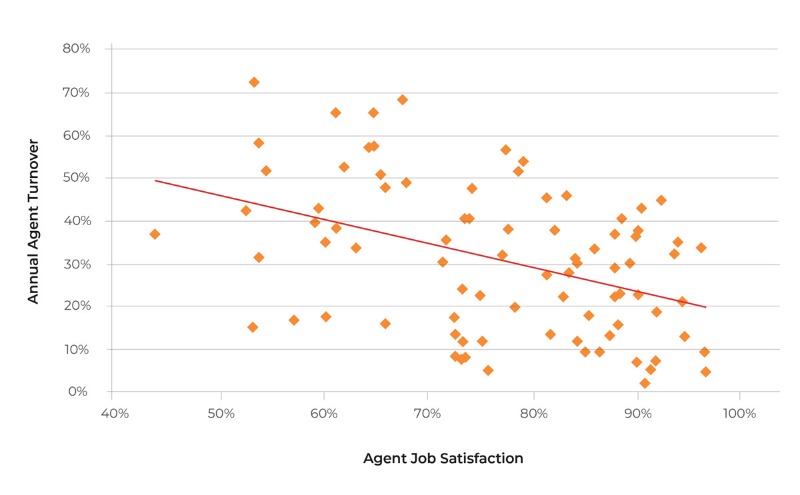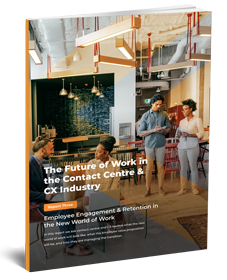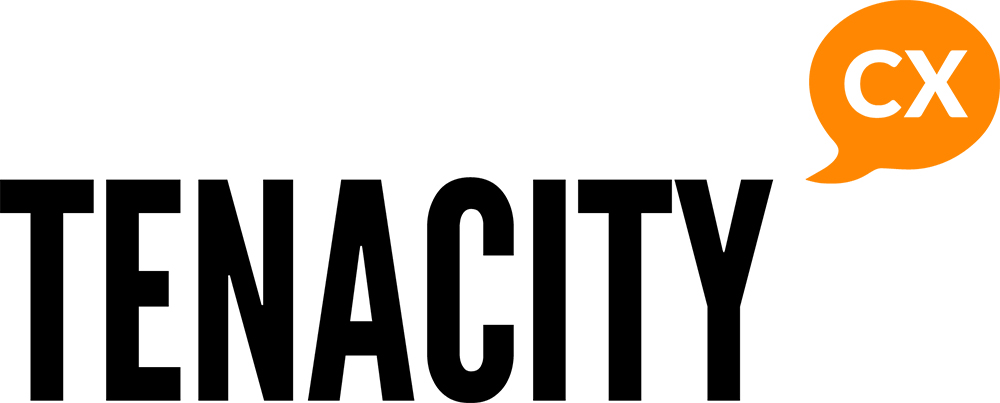As we saw in our last blog, if you want to attract the best people in this job market, you need a new employee value proposition.
An employee value proposition has usually been expressed in terms of the role and responsibilities the employer is hiring for, as well as the company’s culture, working environment, goals and social responsibilities, and commitment to providing employees with opportunities.
This is a good start, but in the new world of work, if you want to be an employer of choice, it is not enough.
The new employee value proposition represents an opportunity to fundamentally redefine what work is, and the relationship between employee, employer and work. It is built on two fundamental pillars, which we will look at now.
First pillar: Flexibility
Flexible working is the minimum expectation that most contact centre employers have these days. That isn’t going to change any time soon, as the results of our recent contact centre employee survey show.
If we believe what we read in the press, not all employers are happy to continue offering remote working. They cite issues around productivity, collaboration, team building, and culture to justify the push to return to the office.
We compared the results of our survey of leading contact centre employers with those of our recent employee survey to see how far apart workers and bosses are, and understand what the middle ground might look like.
For new roles we are now advertising them as fully in-office, and after a period of time once you’re up to speed we can offer you hybrid. We are moving to a new site next year and we don’t have a desk for everyone. We based the floorplan on everyone coming in 3 days a week, which we think is the sweetspot when it comes to flexibility. Our late shift will work from home.
Head of Call Centre Operations, Health insurance company
Second pillar: Empowerment
When employees are more engaged at work and satisfied with their job they are more likely to stay with their employer. As the graph below shows (courtesy of a study by ICMI) there is a direct correlation between contact centre agent job satisfaction and agent turnover. The more satisfied contact centre staff are, the less likely they are to leave.

The same study shows a similar inverse correlation between job satisfaction and absenteeism. Unsurprisingly, they also demonstrate a link between agent satisfaction and job satisfaction.
The benefits are clear; the question then is how to ensure agents and other contact centre staff are satisfied in their jobs?
The way the labour market has shifted, employees are looing for the best total package. Hybrid we know is a lot more enticing to most employees than 5 days in the office. But it also comes down to remuneration and development opportunities. They are looking at where they can get the best outcome for themselves. In recent times most employees have been able to achieve that as it’s a candidate market.
Michael Clark, Co-Founder, Coach and Principal Consultant, CXTT Consulting
What employees really want
In our recent employee survey, when asked what most attracts them to a job, employees said pay (26%), job satisfaction and purpose (20%), career opportunities (19%), flexibility of hours and location (19%), and company culture (16%).
Clearly these are all important. But just providing them is not enough. As we have seen, following the pandemic and the wake of the Great Resignation, many people have reassessed their priorities. They still need to work. They still want to work. Its just they want to do it on their own terms.
Work is a large part of our personal identities, but it is not everything. If you want your employees to love you, and to stick around for a long time, you need to help them develop their whole life, not just their work life.
Self-esteem is nothing more than the overlap between a person’s ideal vision of themselves and the reality they are actually living. If you can offer a job and a working environment that closes that gap between vision and reality, youcould gain yourself a loyal employee for life.
For example, perhaps someone’s ideal self-image is to be a great mother who is always there for their children. However, they can’t do that as much as they would like because they have a job they need to pay the mortgage. Their job is therefore a negative influence on their life, overall, as it reduces their self-esteem, confidence and happiness.
Now, let’s turn that around and say that, rather than stopping this person from spending more time with their kids and picking them up from school, their employer enables it.
Hybrid and remote working are almost a non-negotiable now. Even for senior roles. You certainly need hybrid at least to attract candidates, otherwise they’re just not going to move. That flexibility to pick the kids up from school is just crucial now. Some are also driven by pay but we did a values session recently and the number one thing employees wanted from us was development. I’m talking about professional skills and qualifications they can hold for life, not just product training.
Head of Customer Experience, Australian CX technology company
Alignment of purpose
Purpose is a primary driver of why employees stay with an organisation, and how engaged they feel while they are working. It is also what drives our personal lives and leads to feelings of fulfilment. McKinsey has recently published some research into purpose at work. They discovered that employees whose wider sense of purpose outside of work aligns with their work purpose and the purpose of their employer tend to be much more loyal.
The idea is that the more an employee’s purpose outside of work (the outer circle) aligns with the purpose they obtain from their work (the middle circle), the more engaged and fulfilled they will be. If the purpose of the organisation they work for (the inner circle) also aligns then the employee is likely to remain more loyal to the company for longer.

What’s the answer? For me it’s as simple as recognising that every employee is a person. Create an employee experience that embraces that simple fact and supports wellbeing. Its not just about employees being successful in their roles, but also being happy and healthy in their life. Work is a huge part of people’s lives and the impact of their commitment to their work doesn’t start and stop when they clock in and out. I think the pandemic has helped, in that there’s been an erosion of boundaries between work and life – we have been working in each other’s lounge rooms for a few years now.
Tim Buzza, Founder & Chief Customer Officer, Attune Work Solutions
Giving employees more choices
The more control you can give people over their own day-to-day experience of work the more engaged and satisfied they are likely to be.
McKinsey found that 85% of senior managers say their purpose is aligned with their employer’s – meaning they are invested and engaged in their roles - compared to just 15% of frontline workers.
That's a shocking number if you think about it, and improving it should be a priority for any organisation that wants to become an employer of choice.
For more information on what employees are looking for, and what leading organisations are starting to offer, download our latest report.
Free Report
Download our latest free report "Employee Engagement and Retention in the New World of Work" for a deeper dive into these topics.


